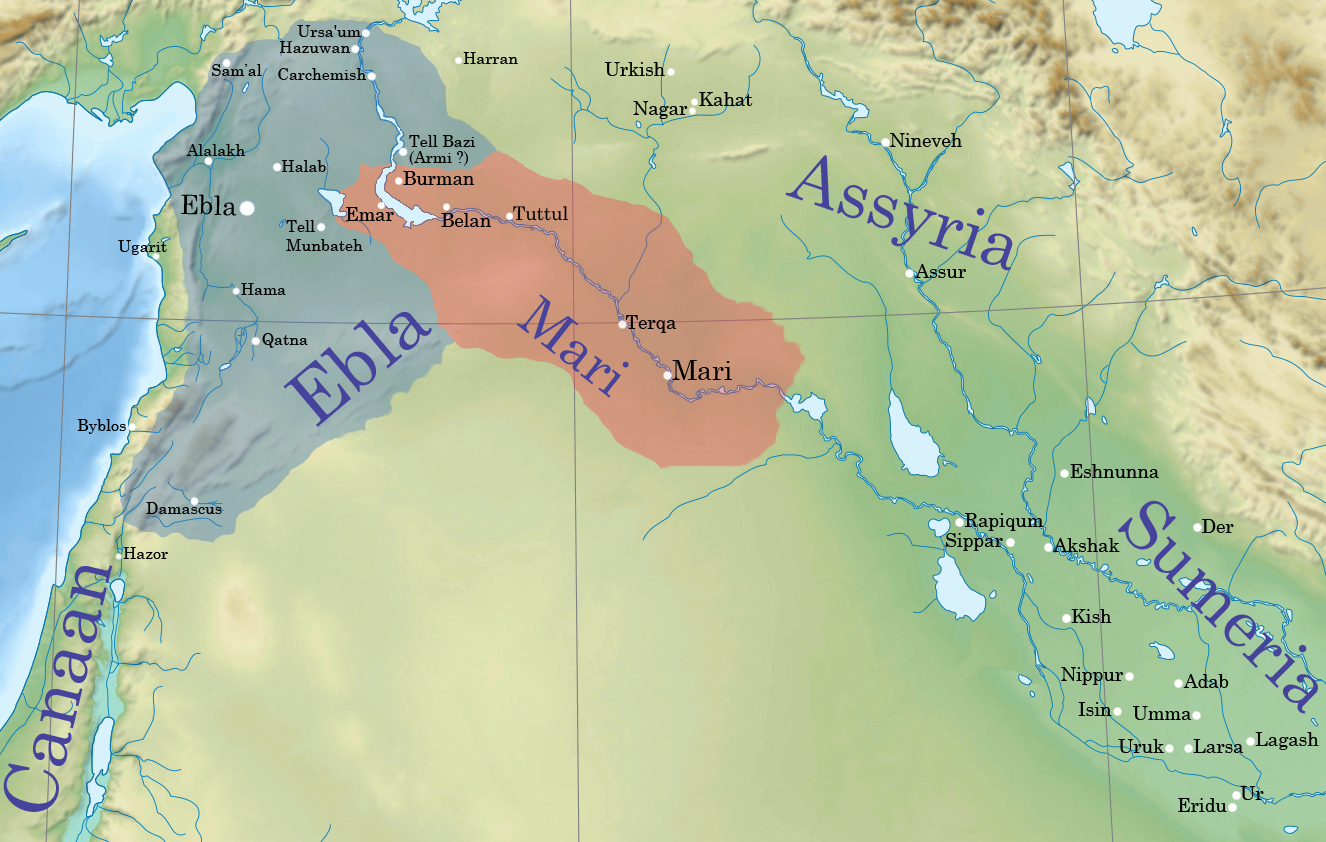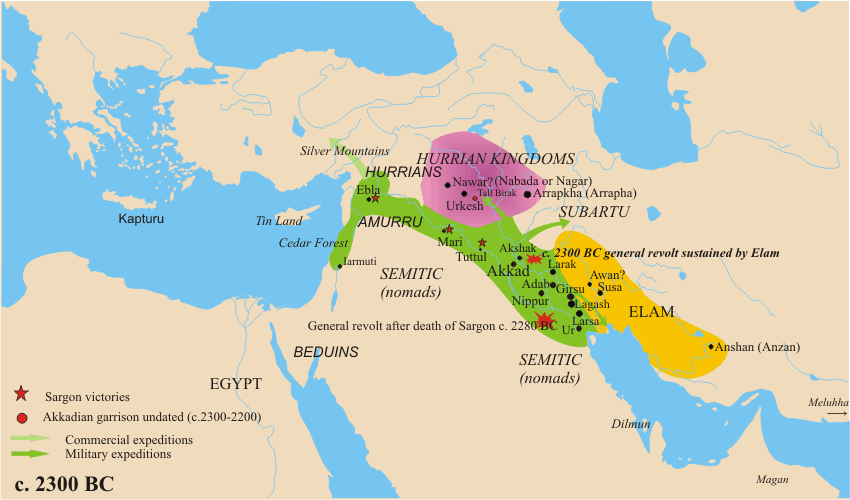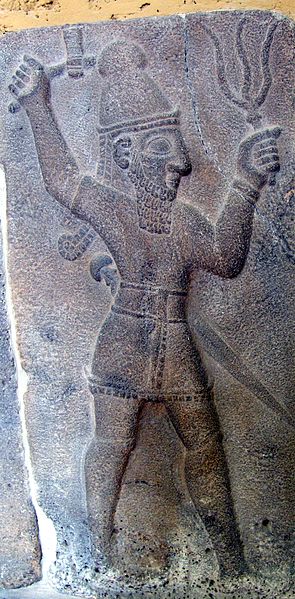|
Khashshum
Hassum (also given as Khashshum, Ḫaššum, Hassu, Hassuwa or Hazuwan) was a Hurrian city-state, located in southern Turkey most probably on the Euphrates river north of Carchemish. History Early Bronze The city was a vassal to Ebla, it was mentioned in the Tablets of Ebla as Hazuwan, and was governed by its own king. It came under the influence of Mari for a short period of time in the 24th century BC, before Irkab-Damu of Ebla regained influence over the area, the city survived the Akkadians conquests in 2240 BC and flourished as a trade center in the first half of the 2nd millennia BC. Middle Bronze In the beginning of 18th century BC, Hassum allied with Yamhad against Yahdun-Lim of Mari, it later helped Yamhad against a kingdom in Zalmakum (a marshy region between the Euphrates and lower Balikh),, but then shifted alliance to Shamshi-Adad I of Assyria after he annexed Mari. The city sent him 1,000 troops to attack Sumu-Epuh of Yamhad. Later, Yarim-Lim I of Yamhad broug ... [...More Info...] [...Related Items...] OR: [Wikipedia] [Google] [Baidu] |
Sumu-Epuh
Sumu-Epuh (reigned Middle chronology) is the first attested king of Yamhad (Halab). He founded the Yamhad dynasty which controlled northern Syria throughout the 17th and 18th centuries BC. Reign Although Sumu-Epuh's early life or the way he ascended the throne is not known, he is considered the first king of Yamhad, and his realm included Alalakh and Tuba. Sumu-Epuh entered the historical records when he was mentioned by Yahdun-Lim of Mari, as one of the leaders who fought against him. Yahdun-Lim was an ambitious ruler who campaigned in the north claiming to have reached the Mediterranean, in spite of having a dynastic alliance with Yamhad to oppose Assyria. Those campaigns caused Sumu-Epuh to support the Yaminite tribes centered at Tuttul against the Mariote king, who emerged victorious but was soon killed by his own son. Yahdun-Lim's death was followed by Shamshi-Adad I of Assyria's conquest of Mari. War Against Assyria Sumu-Epuh aided by Khashshum attacked a kingdom in Za ... [...More Info...] [...Related Items...] OR: [Wikipedia] [Google] [Baidu] |
Yamhad
Yamhad was an ancient Semitic kingdom centered on Ḥalab (Aleppo), Syria. The kingdom emerged at the end of the 19th century BC, and was ruled by the Yamhadite dynasty kings, who counted on both military and diplomacy to expand their realm. From the beginning of its establishment, the kingdom withstood the aggressions of its neighbors Mari, Qatna and Assyria, and was turned into the most powerful Syrian kingdom of its era through the actions of its king Yarim-Lim I. By the middle of the 18th century BC, most of Syria minus the south came under the authority of Yamhad, either as a direct possession or through vassalage, and for nearly a century and a half, Yamhad dominated northern, northwestern and eastern Syria, and had influence over small kingdoms in Mesopotamia at the borders of Elam. The kingdom was eventually destroyed by the Hittites, then annexed by Mitanni in the 16th century BC. Yamhad's population was predominately Amorite, and had a typical Bronze Age Syria ... [...More Info...] [...Related Items...] OR: [Wikipedia] [Google] [Baidu] |
Ebla
Ebla ( Sumerian: ''eb₂-la'', ar, إبلا, modern: , Tell Mardikh) was one of the earliest kingdoms in Syria. Its remains constitute a tell located about southwest of Aleppo near the village of Mardikh. Ebla was an important center throughout the and in the first half of the Its discovery proved the Levant was a center of ancient, centralized civilization equal to Egypt and Mesopotamia and ruled out the view that the latter two were the only important centers in the Near East during the Early Bronze Age. The first Eblaite kingdom has been described as the first recorded world power. Starting as a small settlement in the Early Bronze Age ( ), Ebla developed into a trading empire and later into an expansionist power that imposed its hegemony over much of northern and eastern Syria. Ebla was destroyed during the It was then rebuilt and was mentioned in the records of the Third Dynasty of Ur. The second Ebla was a continuation of the first, ruled by a new royal d ... [...More Info...] [...Related Items...] OR: [Wikipedia] [Google] [Baidu] |
Urshu
Urshu, Warsuwa or Urshum was a Hurrian-Amorite city-state in southern Turkey, probably located on the west bank of the Euphrates, and north of Carchemish. History Urshu was a commercial city governed by a Lord ( EN). It was an ally of Ebla and appears in the tablets as Ursa'um. Later it was mentioned in the inscriptions of Gudea (r. c.2144–2124 BC according to the Middle chronology) as the city where wood resins were procured. An old Assyrian letter that dates to the 19th century BC mentions a temple of the god Ashur in Urshu. In the beginning of the 18th century BC, Urshu allied with Yamhad against Yahdun-Lim of Mari. Relations with Assyria were also strained, and men of Urshu were summoned by Yapah-Adad and his Habiru to attack the lands of Shamshi-Adad I of Assyria. The texts of Mari mentions a conflict between Urshu and Carchemish: the tribes of Upra-peans and Ra-beans attacked Urshu through the land of Carchemish, which caused Urshu to attack a contingent of Carchemis ... [...More Info...] [...Related Items...] OR: [Wikipedia] [Google] [Baidu] |
Yarim-Lim III
Yarim-Lim III (reigned c. Middle 17th century BC - c. 1625 BC - Middle chronology) was the king of Yamhad (Halab) succeeding Hammurabi II. Reign Yarim-Lim ascended the throne at a time of internal disintegration for Yamhad, combined with foreign threats represented with the rise of the Hittites. He was either the son of Niqmi-Epuh or Irkabtum. First Years and Internal Affairs Yarim-Lim fought and won against Qatna in his early years, but Yamhad's weakness was clear. Ammitakum of Alalakh declared himself king but not as independent ruler, he acknowledged Yarim-Lim as his suzerain and appointed his son Hammurabi as his heir in the presence of Yarim-Lim, declaring him a servant to the great king of Yamhad. Yarim-Lim was a passive actor in naming the heir to Alalakh War with the Hittites The Hittite king Hattusili I exploited Alalakh's proclamation of sovereignty and the internal dissent it caused in Yamhad. He attacked Alalakh in the second year of his Syrian campaigns and conquer ... [...More Info...] [...Related Items...] OR: [Wikipedia] [Google] [Baidu] |
Hurrian
The Hurrians (; cuneiform: ; transliteration: ''Ḫu-ur-ri''; also called Hari, Khurrites, Hourri, Churri, Hurri or Hurriter) were a people of the Bronze Age Near East. They spoke a Hurrian language and lived in Anatolia, Syria and Northern Mesopotamia. The largest and most influential Hurrian nation was the kingdom of Mitanni, its ruling class perhaps being Indo-Aryan speakers. The population of the Hittite Empire in Anatolia included a large population of Hurrians, and there is significant Hurrian influence in Hittite mythology. By the Early Iron Age, the Hurrians had been assimilated with other peoples. The state of Urartu later covered some of the same area. Language The Hurrian language is closely related to the Urartian language, the language of the ancient kingdom of Urartu. Together they form the Hurro-Urartian language family. The external connections of the Hurro-Urartian languages are disputed. There exist various proposals for a genetic relationship to ot ... [...More Info...] [...Related Items...] OR: [Wikipedia] [Google] [Baidu] |
Middle Chronology
The chronology of the ancient Near East is a framework of dates for various events, rulers and dynasties. Historical inscriptions and texts customarily record events in terms of a succession of officials or rulers: "in the year X of king Y". Comparing many records pieces together a relative chronology relating dates in cities over a wide area. For the 3rd and 2nd millennia BC, this correlation is less certain but the following periods can be distinguished: *Early Bronze Age: Following the rise of cuneiform writing in the preceding Uruk period and Jemdet Nasr periods came a series of rulers and dynasties whose existence is based mostly on scant contemporary sources (e.g. En-me-barage-si), combined with archaeological cultures, some of which are considered problematic (e.g. Early Dynastic II). The lack of dendrochronology, astronomical correlations, and sparsity of modern, well-stratified sequences of radiocarbon dates from Southern Mesopotamia makes it difficult to assign abso ... [...More Info...] [...Related Items...] OR: [Wikipedia] [Google] [Baidu] |
Umman Manda
Umman Manda ( Akkadian language: ) is a term used in the early second and first millennia BC for a poorly known people in the Ancient Near East. They have been identified in different contexts as Hurrians, Elamites, Medes, Cimmerians, and Scythians. The homeland of Umman Manda seems to be somewhere from Central Anatolia to north or northeastern Babylonia, possibly in what later came to be known as Mitanni, Mannae, or Media. Zaluti, whose name seems to have an Indo-Iranian etymology, is mentioned as a leader of Ummanda Manda. He is even suggested to be identified with Salitis the founder of the Hyksos, the Fifteenth dynasty of Egypt. The principal literary source is the so-called ''Cuthaean Legend'' of Naram-Sin, a composition that deals with the third-millennium BC king of Agade (Akkad) Naram-Sin and his struggles against the Umman-manda. As a literary topos, the Umman-manda represent a socio-cultural phenomenon with a strong theological basis: The Umman-manda are ... [...More Info...] [...Related Items...] OR: [Wikipedia] [Google] [Baidu] |
Nur Mountains
The Nur Mountains ( tr, Nur Dağları, "Mountains of Holy Light"), formerly known as Alma-Dağ, the ancient Amanus ( grc, Ἁμανός), medieval Black Mountain, or Jabal al-Lukkam in Arabic, is a mountain range in the Hatay Province of south-central Turkey, which starts south of the Taurus Mountains (and is linked with it), south of the Ceyhan river (old name: Pyramus), runs roughly parallel to the Gulf of İskenderun (old name: Gulf of Issus) (İskenderun was called Alexandria of Cilicia) and ends in the Mediterranean coast between the Gulf of İskenderun and the Orontes ( Asi) river mouth. The range has about 100 miles (200 kilometers) in length and reaches a maximum elevation of and divides the coastal region of Cilicia from Antioch and inland Syria making a natural border between Asia Minor (Anatolia), in the southeast region, and the rest of Southwest Asia. The highest peak is Bozdağ Dağı. A major pass through the mountains known as the Belen Pass (Syrian Gates) is ... [...More Info...] [...Related Items...] OR: [Wikipedia] [Google] [Baidu] |
Kurd-Dagh
Kurd Mountain or Kurd Dagh ( ku, چیای کورمنج, Çiyayê Kurmênc; tr, Kürt Dağı, officially ; ar, جبل الأكراد) is a highland region in northwestern Syria and southeastern Turkey. It is located in the Aleppo Governorate of Syria and Kilis Province of Turkey. The Kurd Mountain should not be confused with the neighboring Jabal al Akrad, which is located further southwest towards the mediterranean coastline. Location and description Kurd Mountain is a part of the Limestone Massif of northwestern Syria. The mountain is a southern continuation into the Aleppo plateau of the highlands on the western part of the Aintab plateau. The valley of River Afrin surrounds Kurd Mountain from east and south and separates it from the plain of Aʻzāz and Mount Simeon to the east, and from Mount Harim to the south. The valley of River Aswad separates Mount Kurd from Mount Amanus to the west. In Syria, it is among the four "ethnic mountains" of western Syria, along with a ... [...More Info...] [...Related Items...] OR: [Wikipedia] [Google] [Baidu] |
Hittites
The Hittites () were an Anatolian people who played an important role in establishing first a kingdom in Kussara (before 1750 BC), then the Kanesh or Nesha kingdom (c. 1750–1650 BC), and next an empire centered on Hattusa in north-central Anatolia (around 1650 BC). This empire reached its height during the mid-14th century BC under Šuppiluliuma I, when it encompassed an area that included most of Anatolia as well as parts of the northern Levant and Upper Mesopotamia. Between the 15th and 13th centuries BC, the Empire of Hattusa—in modern times conventionally called the Hittite Empire—came into conflict with the New Kingdom of Egypt, the Middle Assyrian Empire and the empire of Mitanni for control of the Near East. The Middle Assyrian Empire eventually emerged as the dominant power and annexed much of the Hittite Empire, while the remainder was sacked by Phrygian newcomers to the region. After BC, during the Late Bronze Age collapse, the Hittites splintered in ... [...More Info...] [...Related Items...] OR: [Wikipedia] [Google] [Baidu] |
Teshub
Teshub (also written Teshup, Teššup, or Tešup; cuneiform ; hieroglyphic Luwian , read as ''Tarhunzas'';Annick Payne (2014), ''Hieroglyphic Luwian: An Introduction with Original Texts'', 3rd revised edition, Wiesbaden: Harrassowitz Verlag, p. 159. Ugaritic 𐎚𐎘𐎁, ''TṮB'') was the Hurrian god of sky, thunder, and storms. Taru was the name of a similar Hattic storm god, whose mythology and worship as a primary deity continued and evolved through descendant Luwian and Hittite cultures. In these two, Taru was known as ''Tarhun / Tarhunt- / Tarhuwant- / Tarhunta'', names derived from the Anatolian root ''*tarh'' "to defeat, conquer". Taru/Tarhun/Tarhunt was ultimately assimilated into and identified with the Hurrian Teshub around the time of the religious reforms of Muwatalli II, ruler of the Hittite New Kingdom in the early 13th century BCE. [...More Info...] [...Related Items...] OR: [Wikipedia] [Google] [Baidu] |



